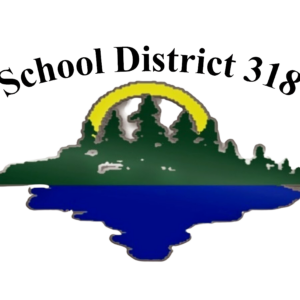“If we didn’t change during the pandemic, we would be in a very bad place. We said that we were going to push forward for what was right for our kids, and we are still doing it. Our teachers have embraced literacy instruction with a sense of urgency and made significant gains; I couldn’t be more proud of them.”
Ryan Debay, Teaching and Learning Director at ISD 318
 Grand Rapids Independent School District 318 is located in Itasca County in Grand Rapids, Minnesota, and serves approximately 4,000 students from Kindergarten through 12th grade. The story begins with an all-too-familiar trend: In 2017, standardized testing and screening showed a gradual decline in basic reading proficiency and a deficiency in fundamental reading skills. While the district had the right goals in place to achieve 90-95% reading proficiency by 2025 and what they believed was an effective approach to teaching reading, between 50-60% of the district’s students needed reading support.
Grand Rapids Independent School District 318 is located in Itasca County in Grand Rapids, Minnesota, and serves approximately 4,000 students from Kindergarten through 12th grade. The story begins with an all-too-familiar trend: In 2017, standardized testing and screening showed a gradual decline in basic reading proficiency and a deficiency in fundamental reading skills. While the district had the right goals in place to achieve 90-95% reading proficiency by 2025 and what they believed was an effective approach to teaching reading, between 50-60% of the district’s students needed reading support.
The faculty recognized something was wrong: their elementary-aged students were significantly behind in reading skills coming out of kindergarten, first and second grade in decoding, phonemic awareness, phonological awareness, phonics, and fluency. It became clear that the Balanced Literacy approach they had been following was not working. That’s when the district’s Teaching and Learning and Special Education departments took decisive action mid-pandemic to identify their literacy gaps and remediate their instruction.
How District 318 Overcame the Odds
The Teaching and Learning team started screening students during the pandemic and very quickly realized that they needed to do something more explicit to teach their students’ phonics and phonemic awareness in kindergarten, first, and second grades.
To start, ISD 318 sent a cohort of teachers to a specialized literacy instruction course from IMSE to train them in a program based on Orton-Gillingham, or OG. The feedback to the district was incredibly positive, setting in motion a collective “buzz” from the teachers and support from administrators who committed to having 100% of K-2 classroom teachers, licensed interventionists, and K-2 special education teachers trained by IMSE.
- Since embracing IMSE’s training, rooted in the Science of Reading, the district’s literacy proficiency level has risen an average of 16% for grades K-5. Additionally, at each grade level, the number of students at high-risk in literacy proficiency has been reduced throughout the district.
- More specifically, from Winter 2020 to Winter 2022, the average increase in kindergarten reading proficiency was 35%.
- From Winter 2021 – Winter 2022, the average increase in reading proficiency in the first grade at the district’s Cohasset Elementary improved to 47%.
One district teacher said, “My students were struggling to be independent readers and disengaging during instructional time. IMSE and Orton-Gillingham taught me how to bring in multi-sensory elements into my lessons that were engaging, motivating, and easily differentiated.”
Three years into the adoption of this framework, 100% of teachers at ISD 318 have been trained by IMSE, and 86% are using OG as their primary literacy instruction for Tier 1 classrooms. In fall 2023, 100% of primary teachers will use OG as their primary phonics instruction.

You can read the full story here of how elementary teachers at Grand Rapids ISD 318 evolved from thinking the Orton-Gillingham methodology was only effective for dyslexic students – to embracing the approach and crediting it as the main reason behind the incredible improvements and success they are seeing across all tiers of their students.
To learn more about how your school or district can improve literacy education with IMSE, call (800) 646-9788 or email info@imse.com to speak with a member of our team today!
Please connect with us on Facebook, Twitter, Instagram, LinkedIn, and Pinterest to get tips and tricks from your peers and us. Read the IMSE Journal to hear success stories from other schools and districts, and be sure to check out our digital resources for refreshers and tips.
